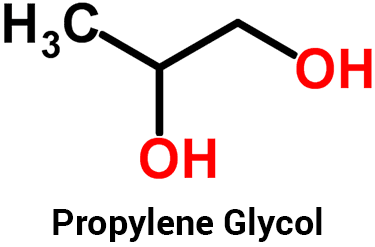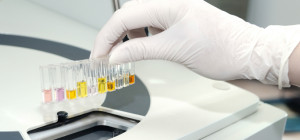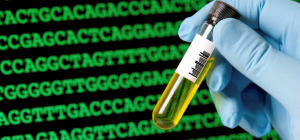Propylene glycol is a colorless and odorless liquid which can be derived from natural gas, petroleum, or vegetable sources. It is widely used because of its relatively low cost and versatile nature. Propylene Glycol is found in many personal-care products like hair conditioner, shampoo, and styling products.
The industrial-grade is used in resin manufacturing and paints and coatings, detergents and brake fluids. The Propylene glycol USP, on the other hand, meets strict quality standards, and therefore, it is appropriate for applications such as pharmaceuticals, food, and cosmetics.

Chemical facts about propylene glycol
- It is synthetic
- It is water-soluble
- It is easily metabolized
- It is non-toxic
Characteristics of Propylene Glycol
- Colorless
- Odorless
- Strong solvency
- High boiling point
- Low vapor pressure
- Hygroscopic
- Ease of handling
- Biodegradable
Products available
Uses of Propylene Glycol
The following are some of the uses of propylene glycol.
- Pharmaceutical uses
Pharmaceutical-grade propylene glycol USP is used as a non-active enabling agent [excipient]. As an agent, propylene glycol carries flavors in food and beverages and helps to retain taste and moisture in livestock and pet feed. It also acts as a carrier of active ingredients found in gel capsules and cough syrup. Propylene glycol keeps personal care products such as shampoos, sunscreen, and body lotions soft and moist.
- Industrial uses
Industrial-grade propylene glycol is used in industries as a heat-transfer medium that protects against corrosion and pressure burst, dissolves active agents, and controls viscosity. It can also be used in paints and coatings for weather protection, in liquid detergents, as a solvent in printing ink, and as an antifreeze. Propylene glycol can also be used in its raw form to make formable plastics such as unsaturated polyester resins.
- Medicinal uses
For medicinal purposes, propylene glycol is used as a solvent in various formats; oral, injectable, or topical. For injectable medications, about 40 percent is made of propylene glycol. Severe effects are not likely to occur when used normally. However, according to the center for disease control [CDC], heavy use of injectable medication or extensive topical uses on delicate skin like burns, can result in excess amount of propylene glycol in the body which may cause toxicity.
The Food and Drug Administration [FDA] on propylene glycol
The FDA has categorized PG as a safe product. Even with prolonged direct exposure, there is minimal or no skin irritation or sensitization. It disappears quickly once the area is flushed. The Material Safety Data Sheet [MSDS] recommends that one should avoid direct handling due to potential irritation, which is a good recommendation for any chemical. It is usually very imperative to use the strongest safety precautions possible when a worker is exposed to continuous and large quantities of concentrated chemical.
Propylene glycol is non-toxic when ingested
Unlike its dangerous and lethal counterpart Ethylene glycol, propylene glycol is quickly metabolized by the liver into normal products of citric acid metabolic cycle, which is entirely non-toxic to the body. About 50 percent of any ingested propylene glycol is excreted directly from the body, and it never comes into contact with the liver.
The elimination half-life for PG is about four hours, and it doesn’t buildup in the body over time. Although, there have been some few cases where a person ingested a large amount of propylene glycol and suffered some liver and neurological effects as a result. However, these were short-lived and disappeared once the product was metabolized and excreted.
The meaning of “antifreeze” to consumers
This term is usually used to alarm consumers. It is a scientific term used to describe the lowering of the freezing point of a liquid. An example is the use of salt to roads and walkways in a snowstorm. This process helps to melt snow and ice, preventing the development of dangerously icy conditions. Salt, therefore, helps to lower the freezing point of water.
Do not be alarmed by the term antifreeze when it comes to propylene glycol. Propylene glycol is one of the few chemicals that are safe at low concentrations, and it can be used in food products and personal care products.







